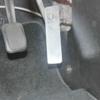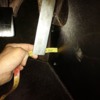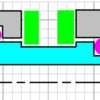Is there any maintenance needed on the linkages or shafts on IR injection systems?
My throttle is hanging up. Throttle blips are extended for a second, resulting in a long high rev.
Looking at the pedal, it and the cable are such that they can possibly hang up on the console side cover, something I'm looking into.
I was wondering though if there was any periodic disassembly or greasing of shafts or anything I might need to be doing to my IR system.
The linkages are heim joints, which I don't think you lube at all, but I don't think that's my issue. I think my issue lies with the pedal or cable hanging up on something, but it made me think about anything else I should be doing to maintain my injection on my car.
I'll be taking the pedal and cable off and inspecting/replacing the cable if it's anything but perfect.
The center console side cover is shaped such that there's a corner that can catch the pedal under the right conditions, so I'll be checking that too.
Original Post





